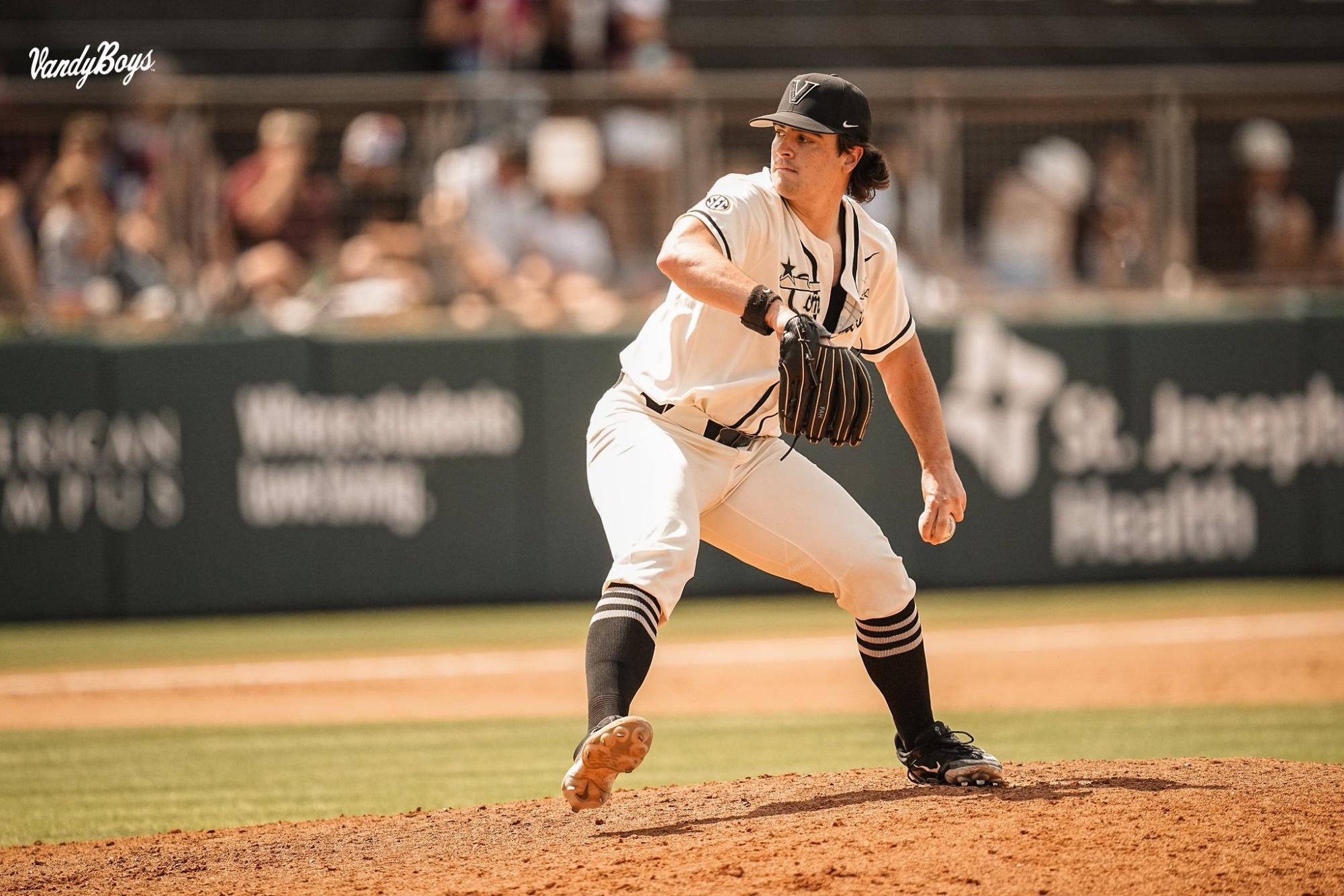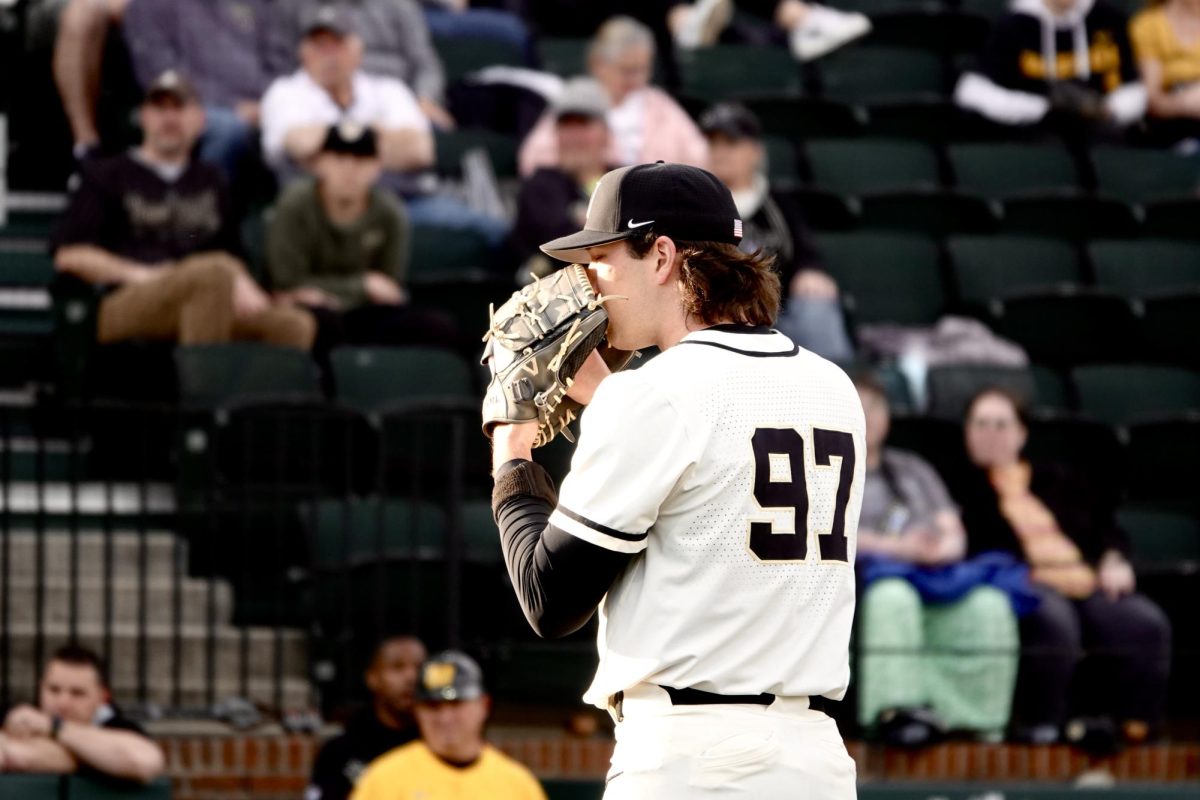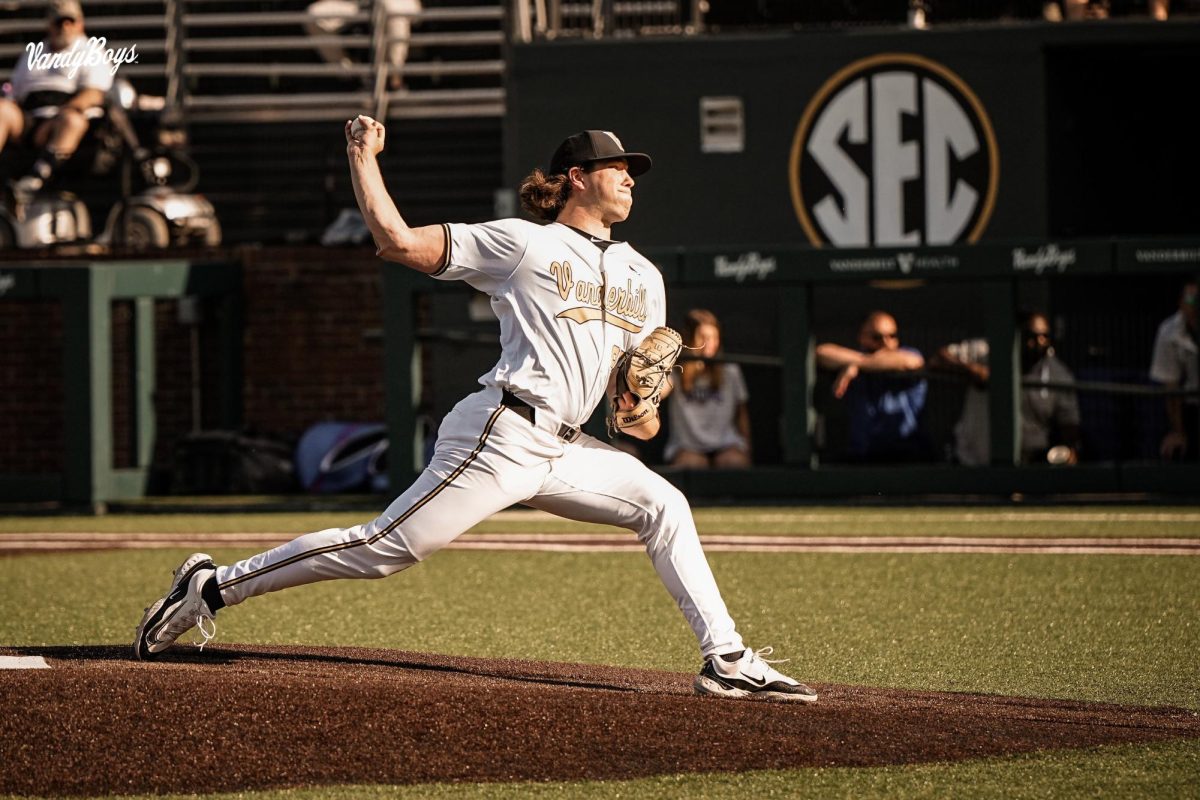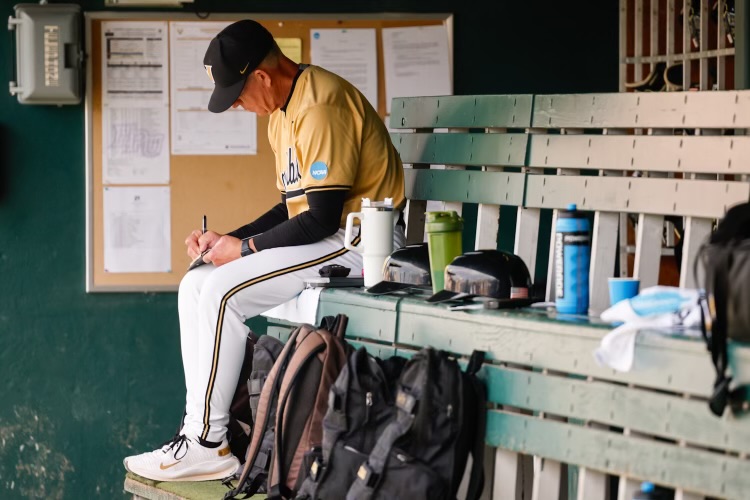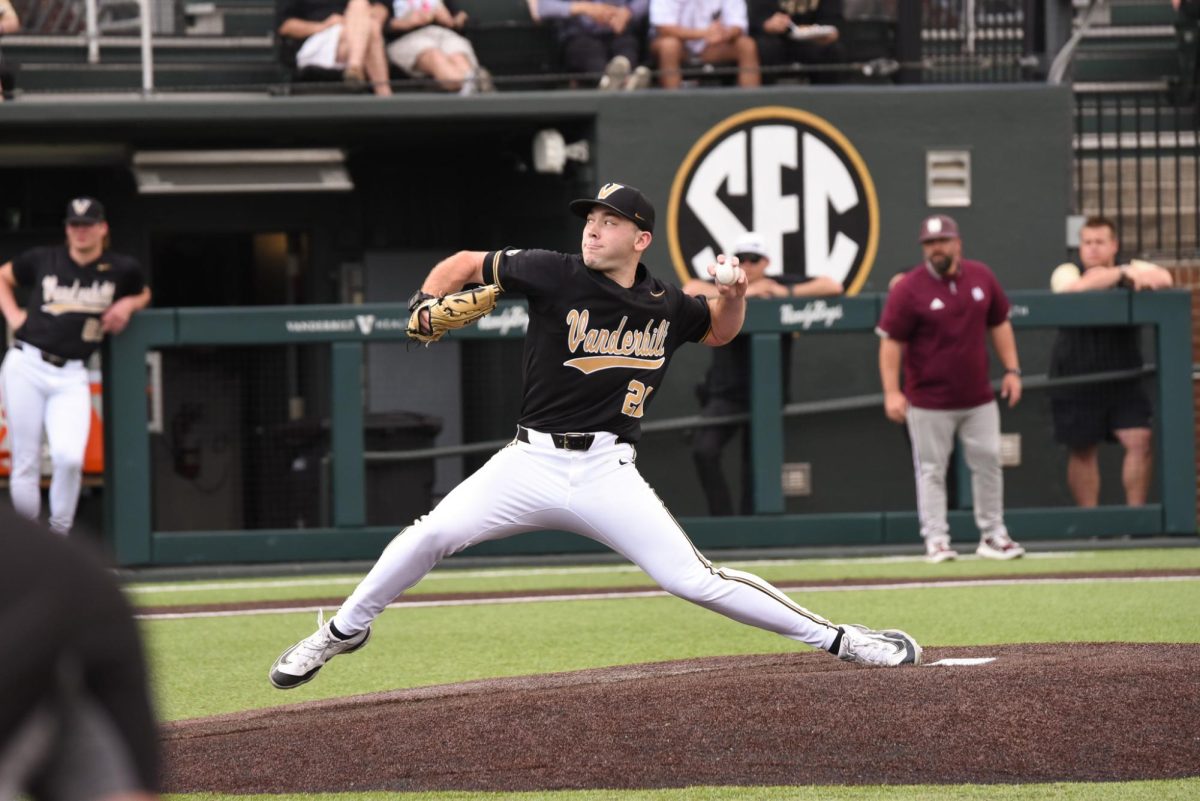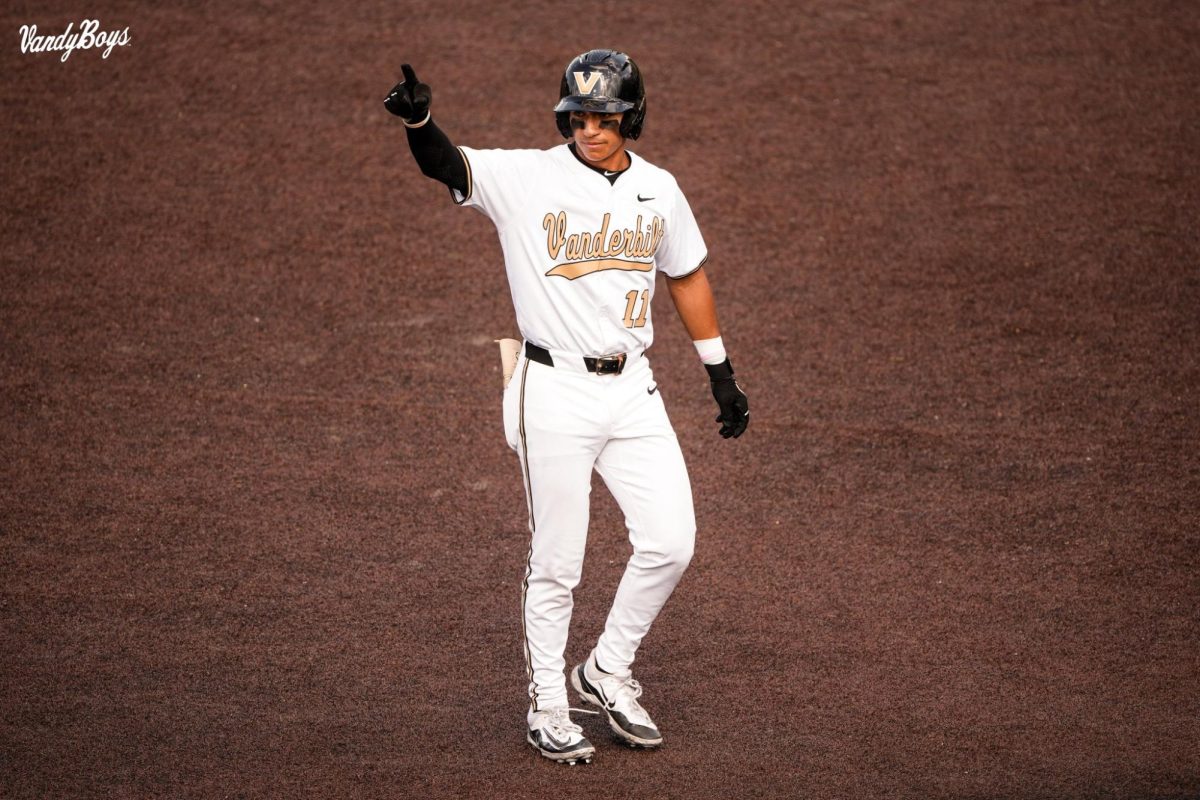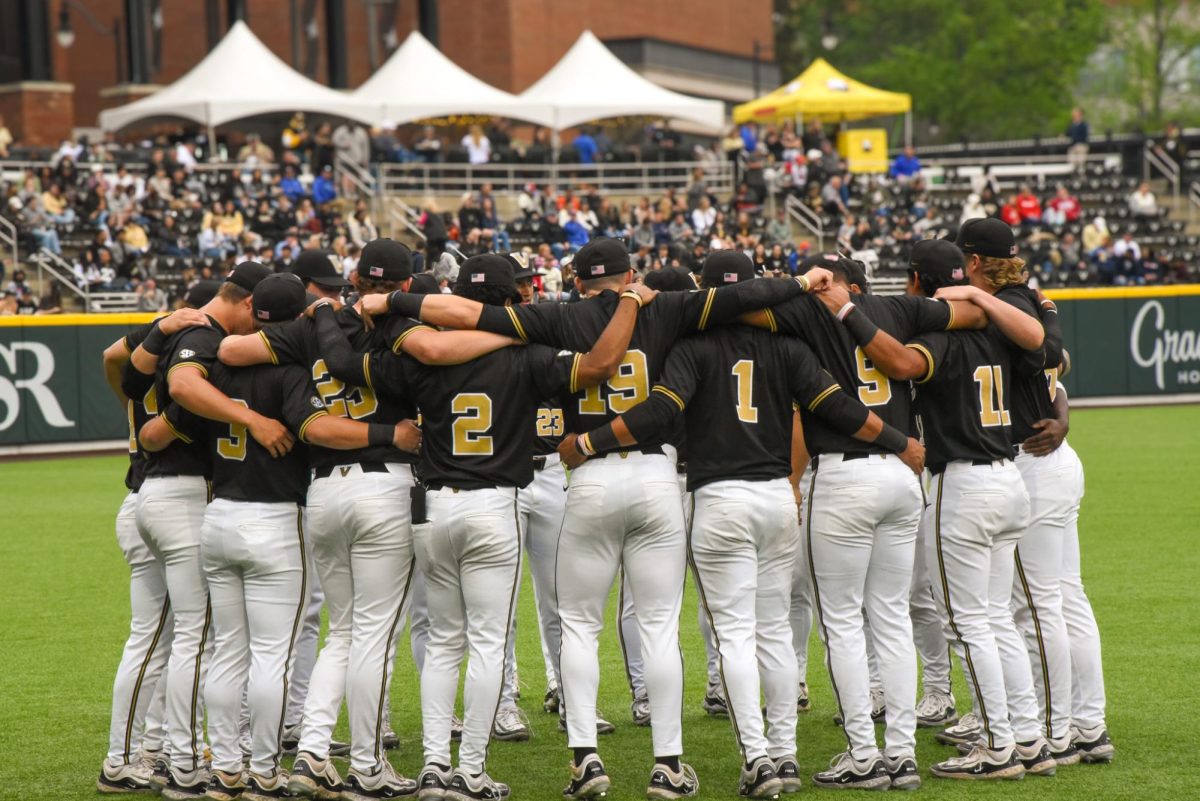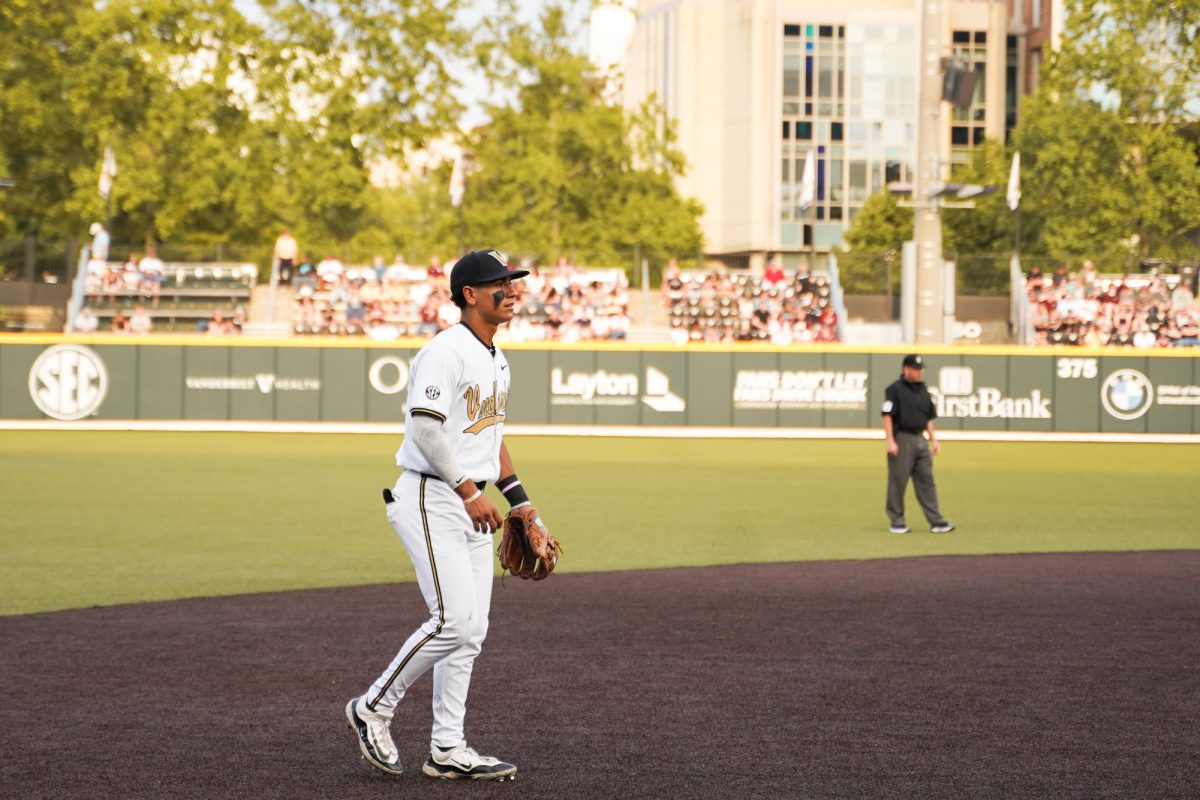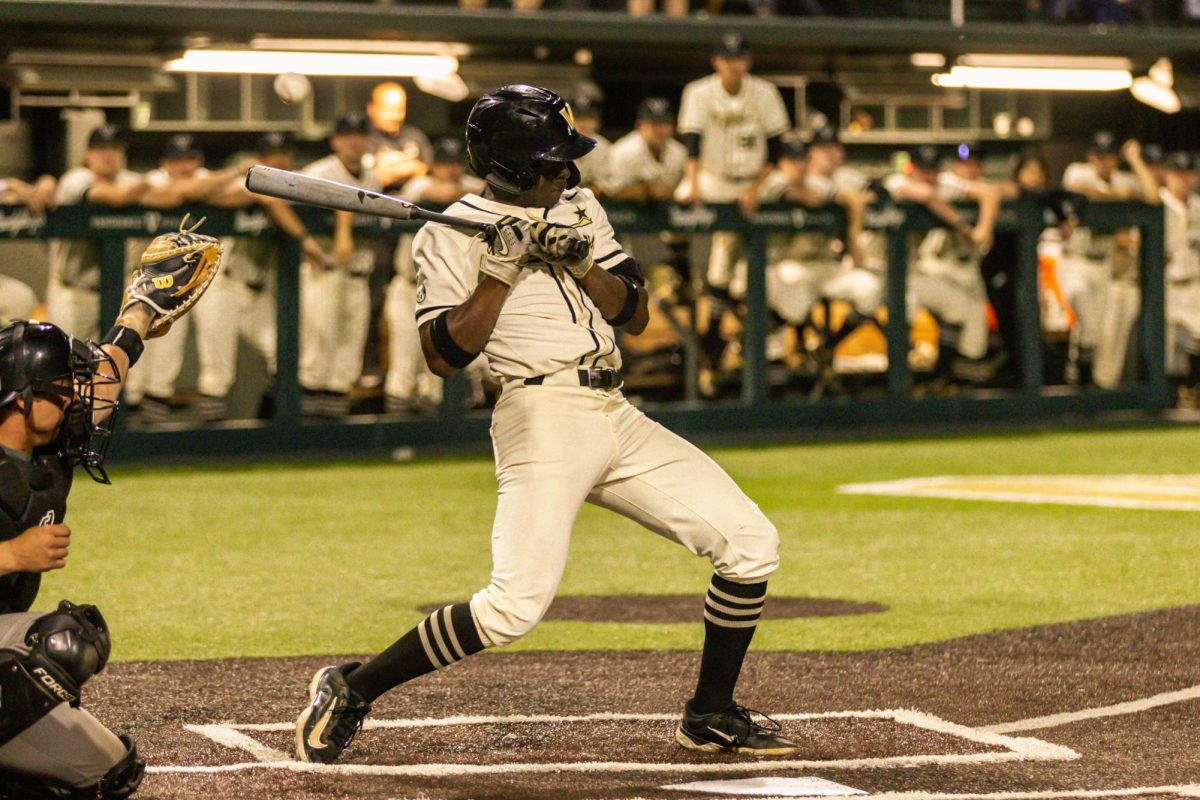After an encouraging series win in Baton Rouge, La., the VandyBoys traveled to College Station, Texas to face the No. 2 Texas A&M Aggies. All eyes were on this series, not only because it was a top-10 matchup but because the VandyBoys appeared to have found their way out of a hitting slump, and the pitching seemed to be coming together. However, these hopes quickly dissipated when the Aggies dominated the Commodores. After the disappointing sweep, the Commodores dropped seven spots in the D1Baseball and now sit at No. 13. The Commodores are now on the bubble to host a regional tournament in the postseason. Here are some takeaways from their series against the Aggies.
Three up.
Davis Diaz emergence
While the Commodores had some apparent offensive struggles in College Station, one player who had an impressive weekend at the plate was Davis Diaz. Against LSU, Diaz struggled at the plate going 2-of-11 while striking out three times. However, against the Aggies, Diaz led the team in offense going 5-of-11 on the weekend while obtaining a perfect 3-of-3 on Saturday and hitting a solo homer on Sunday. Diaz, sitting at anywhere from the three to five hitter position, is key to Vanderbilt getting runs on the board. Diaz, one of the most reliable third basemen in terms of hands and footwork in the program and the SEC, will continually be in the lineup. Corbin and Co. look to Diaz to extend offensive efforts when he is up to bat. His success against one of the better pitching staffs in the SEC is reflective of his ability to regroup and contribute to the team even when they are struggling to string together offense.
Back at home for a few weeks
This season, the Commodores have struggled to win series’ on the road. The Commodores will return to Hawkins Field, where they will play two SEC series against Mississippi State and Florida. Vanderbilt has played well at home where it currently holds a 15-game win streak. The pitcher-friendly environment of Hawkins should aid the VandyBoys as they look to stay above .500 in the conference. Additionally, by the most current D1Baseball rankings, Florida and Mississippi State are the lowest ranked opponents the Commodores will host for the remainder of conference play. At least winning these two series before hitting the road again will be necessary for the Commodores to reach the 17 win benchmark to be considered for a post season regional championship host position.
Making adjustments
The VandyBoys failed to get any offense going on the Texas A&M starters during the first two games of the season. This resulted in the Aggies’ Ryan Prager and Tanner Jones combining for 14.1 innings pitched, and shutting out Vanderbilt across two days. The two-day shutout was the first against the Commodores in the Tim Corbin era. While the Commodores were unable to come out with the win, the beginning of the series finale showed a turnaround in offense generation. In the second inning on Sunday, Vanderbilt was able to gain four runs on four hits. This adjustment, while not as complete as the turnaround that happened at LSU, was akin to it. After gaining six runs on seven hits in their first game at LSU, the Commodores were able to generate 21 runs off 25 hits over the next two games. Adjusting throughout the series and finding ways to generate offense early to make starting pitchers uncomfortable has been key to Commodore success all year. While the Commodores were not able to see the turnaround they hoped they would in College Station, continually adjusting is an indicator of a team that wants to and will win.
Three down.
First-inning pitching troubles
The Aggies tested Vanderbilt’s starting pitchers in the first few innings. Bryce Cunningham and Carter Holton each allowed three and five runs in the first inning, respectively. Greysen Carter— who started on Sunday— was the only Commodore starter not to allow a run in the first inning. While these deficits were nothing that the VandyBoys couldn’t come back from, they quickly dug a hole for the offense and swayed the momentum towards the Aggies in the already hostile environment that is Olsen Field at Blue Bell Park. These first-inning troubles led to starters having high pitch counts early in the game, limiting their impact in late innings. For reference, the starting pitchers of Cunningham, Holton and Carter combined for 10.2 innings as opposed to their combined 13.3 innings against LSU.
Keep the ball inside the park
While I typically dislike the narrative of allowing fewer home runs, I think this is a point that needs to be raised in this particular context. The Vanderbilt pitching staff allowed the Aggies to hit eight home runs. While Vanderbilt pitchers are more likely to give up home runs due to the pitching strategy pushed by Corbin and Co. of putting players on the mound that consistently throw strikes, the number of home runs allowed this weekend is not a recipe for success. This VandyBoys team does not have the same hitting power that some other SEC teams do to match them home run for home run. In fact, the Aggie’s first three batters have more home runs combined on the season (48) than Vanderbilt does as a team (34).
Currently, Vanderbilt has the third-highest home run per fly ball rate in the SEC, at 18.8%, indicating that they are more prone to allowing home runs on balls hit in the air than other SEC opponents. However, they also have the sixth-lowest ERA (4.23) and have struck out 355 batters. Throughout the season, the difference maker in games has often been the pitching. Vanderbilt wins its games when the pitching staff paints the edges of the strike zone, forcing the opposing team to hit into plays or strike out. If the pitching staff leaves the ball hanging over the middle of the plate as it did against the Aggies, it will struggle to make up for it on offense.
(Almost) Blanked on Offense
After the Commodores swept Missouri, I wrote about how Vanderbilt failed to generate almost any offense. Meanwhile, like most VandyBoys followers, I thought the team was on an upward trend after this slump due to offensive explosions at LSU and during the midweek matchup against Middle Tennessee. These thoughts proved too early in their assumption, with the VandyBoys being shutout for the entirety of the first two games. In short, the rate at which the VandyBoys offense produces hits and runs is inconsistent. The failure to generate offense has cost this team two series sweeps already. As I acknowledged before, there were issues with the pitching staff which allowed Texas A&M to dig the Vanderbilt offense into a hole; however, the numbers show Vanderbilt’s hitting struggles over the weekend.
Across 25 innings of work, the Vanderbilt offense collected 17 hits and four runs through 91 at-bats, meaning Vanderbilt was only successful at the plate about 19% of the time. This number is futile compared to the Aggies’ 31 hits, off 93 at-bats, where they collected nine times as many runs as the Commodores. Vanderbilt’s first run of the series did not cross the plate until inning number 18 of the weekend when Braden Holcomb homered to left field to score Espinal, who had previously walked. Vanderbilt was called out off of contact 32 times while striking out 29 times. While these stats are also a testament to the elite pitching the Aggies displayed over the weekend, Vanderbilt needs to be able to generate offense against better teams in the nation if they want to return to Omaha.
The power gap between the Vanderbilt lineup and the rest of the SEC was evident over the weekend. However, Vanderbilt’s team is not composed of power hitters. While Texas A&M went to the portal to recruit some heavy hitters, Vanderbilt does not have that kind of power. Right before the season opener, head coach Tim Corbin said he wasn’t worried about the lack of an apparent high-leverage power hitter. The Vanderbilt offense thrives off getting runners on base off simple, hard contact and advancing runners through stealing. This approach has shown that plenty of runs can be scored, but the key is getting hits and making contact, which Vanderbilt struggled to do in College Station.
Next up, the Commodores will travel to cross-town opponent Lipscomb on April 16 before returning back to Hawkins Field on April 18 at 6:30 p.m. CDT for their first game of a weekend series against the Florida Gators.



